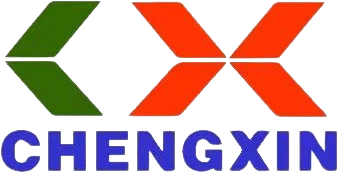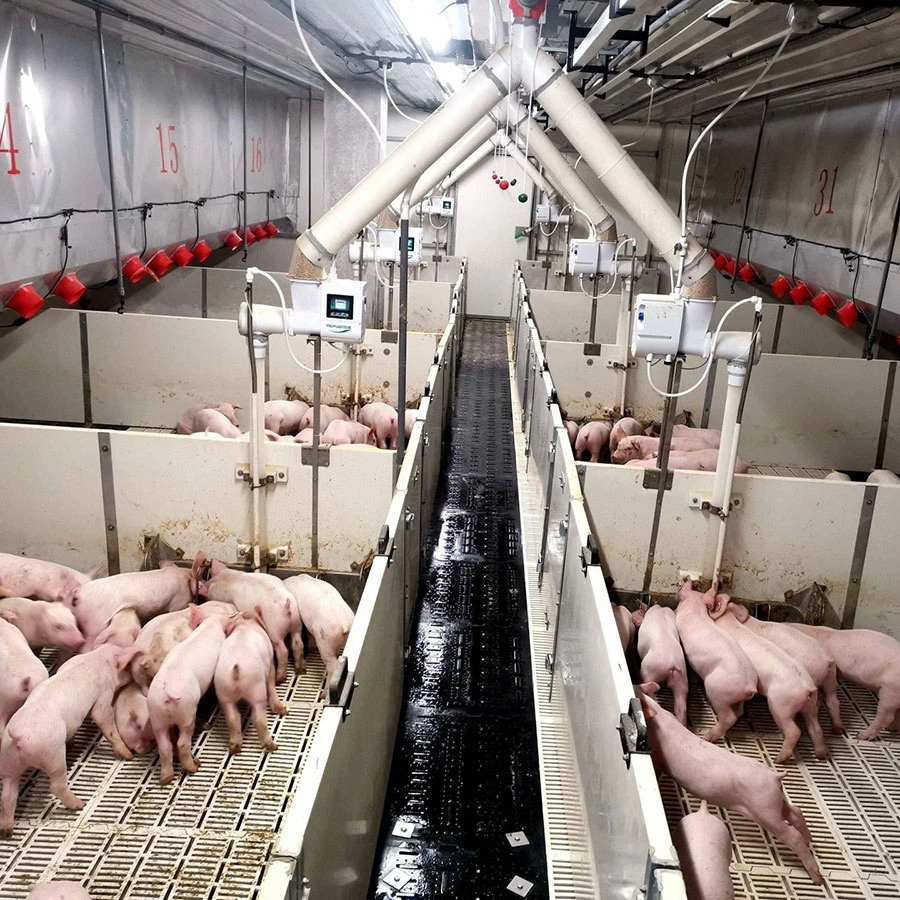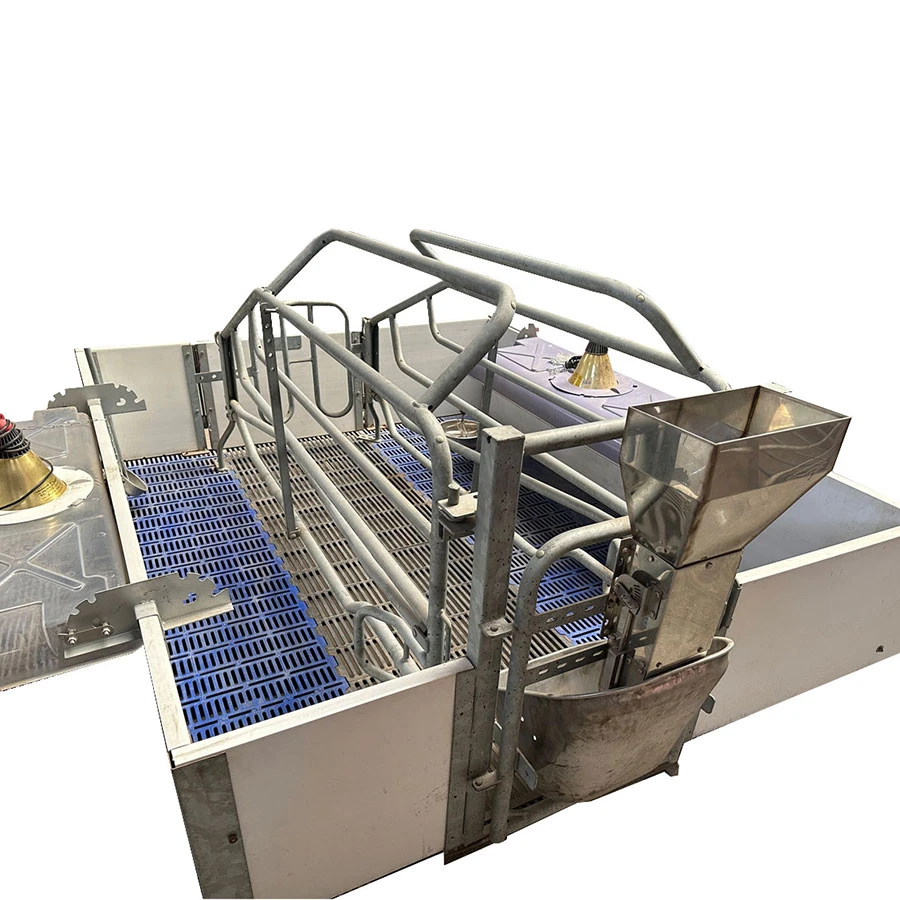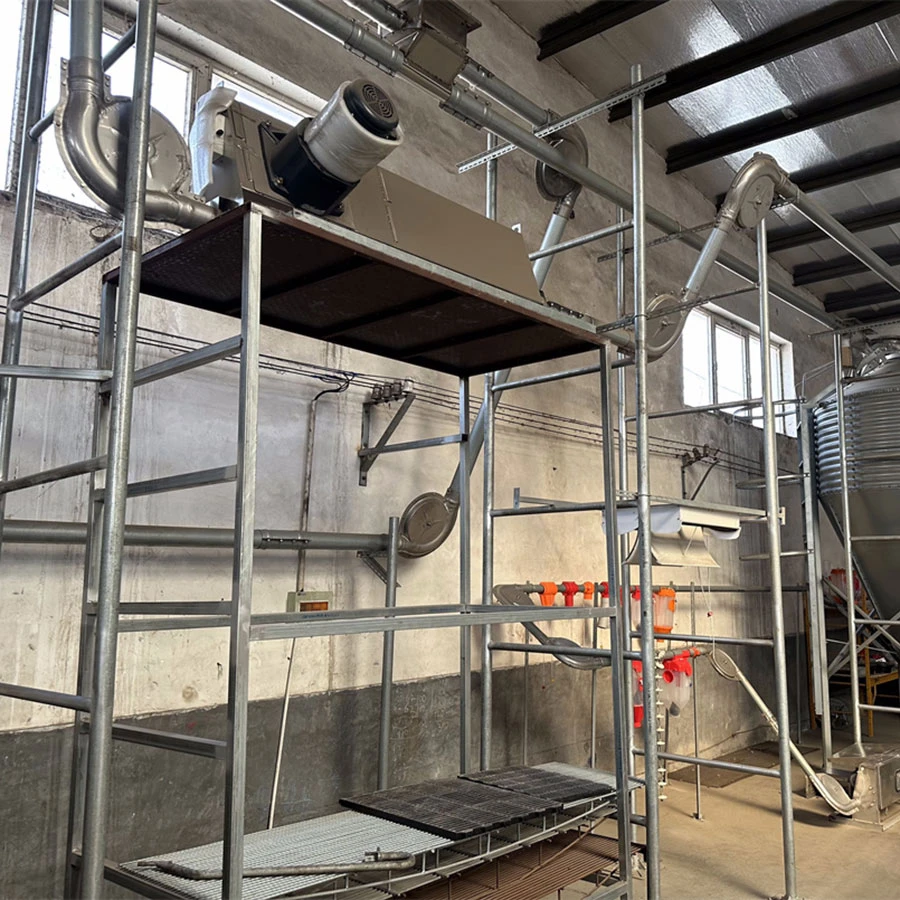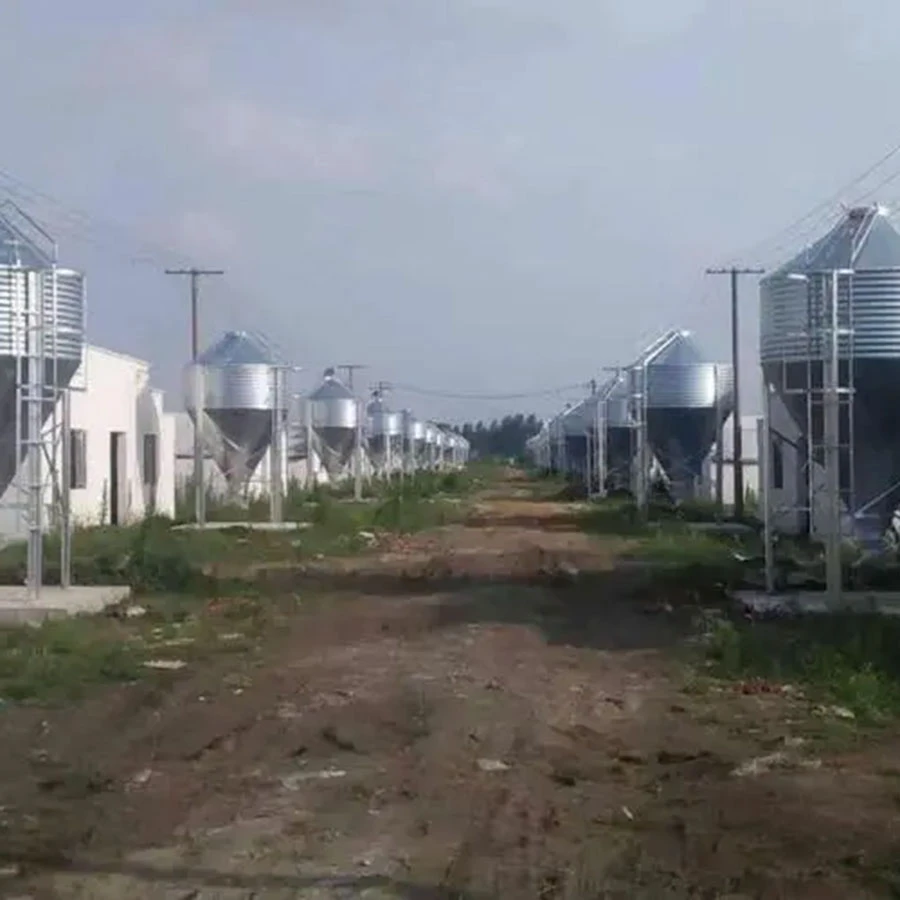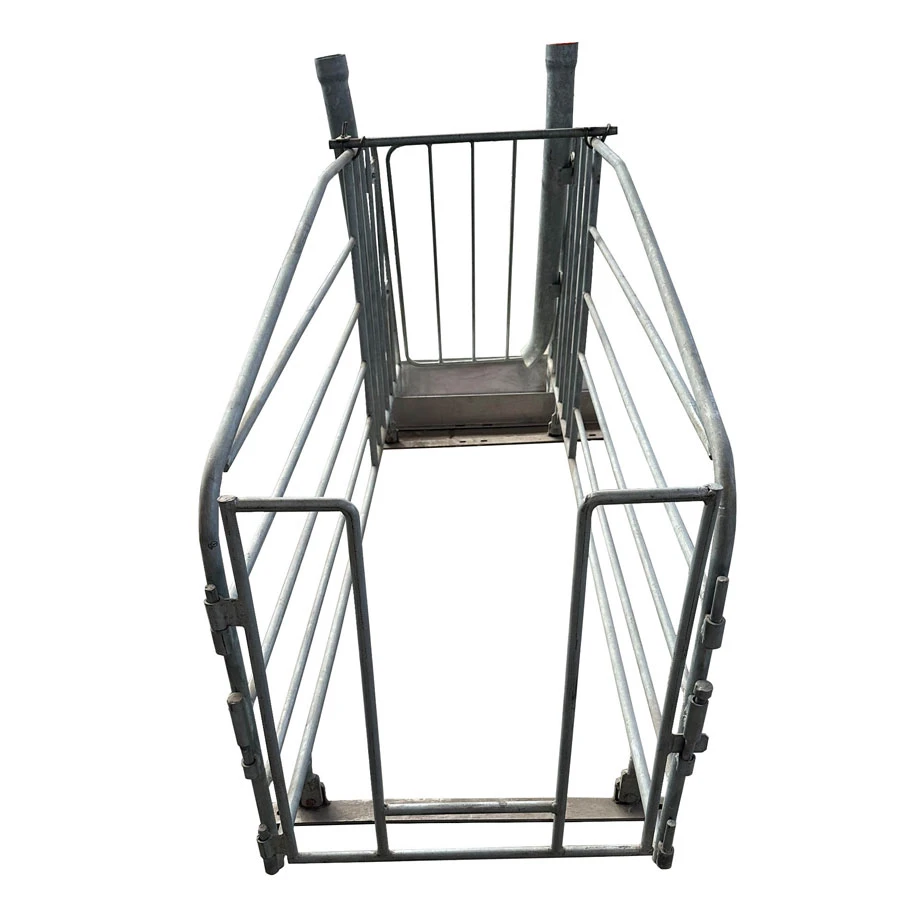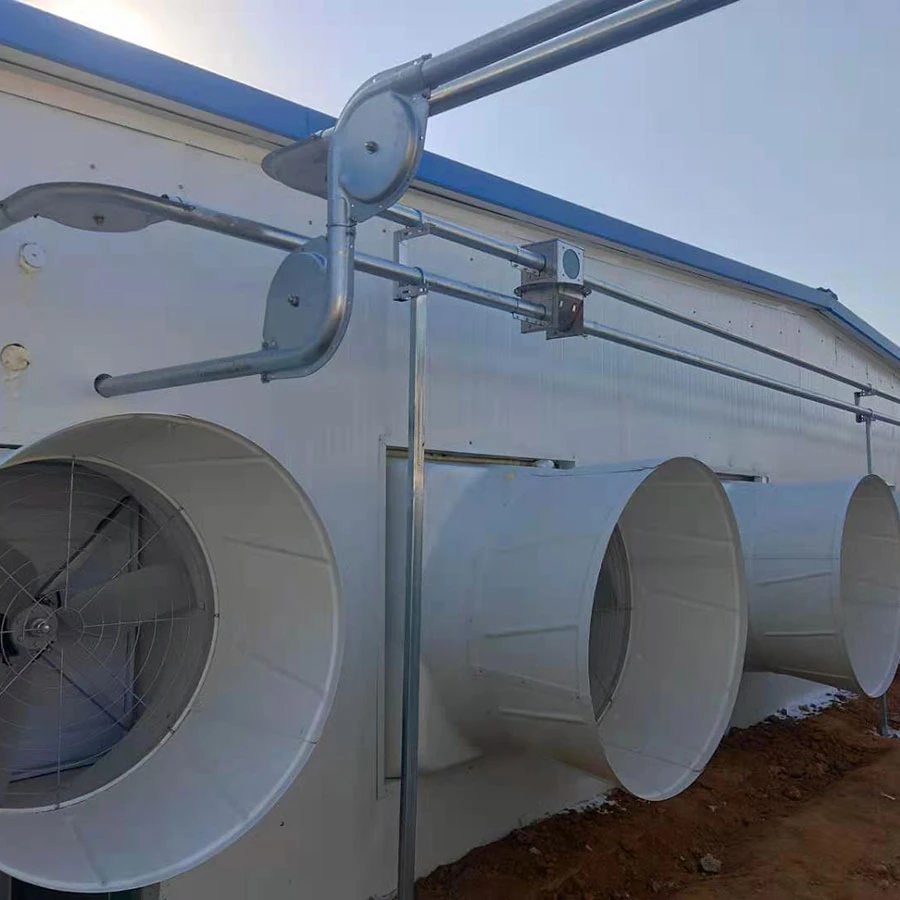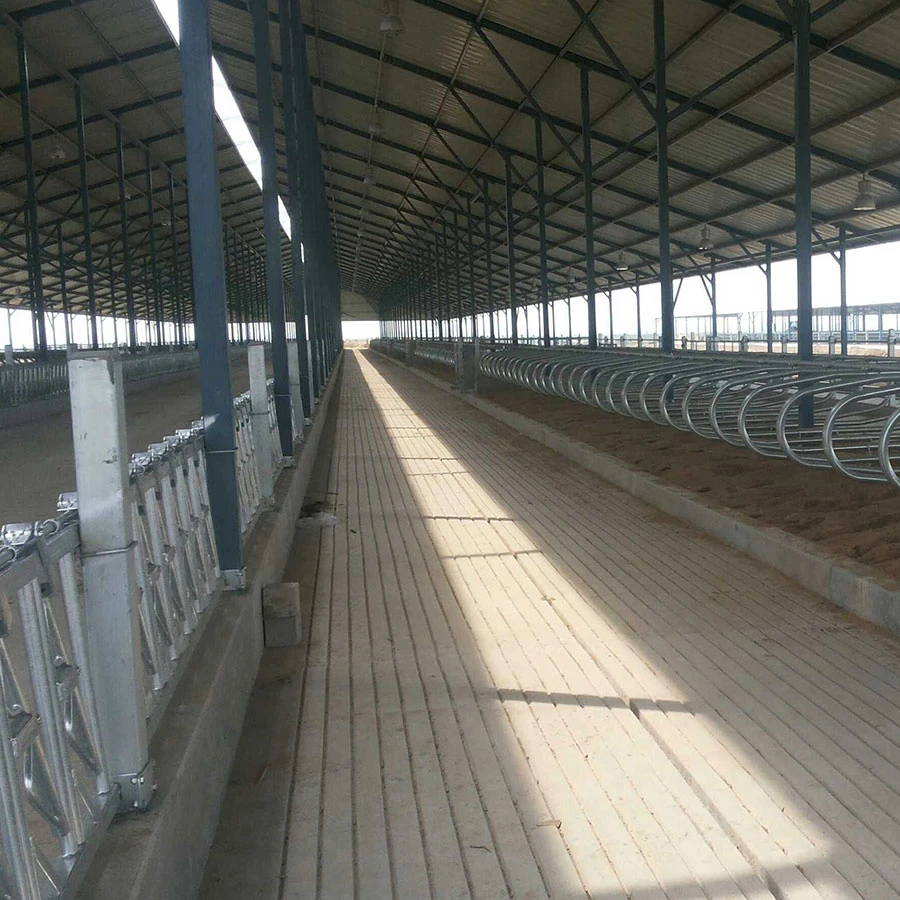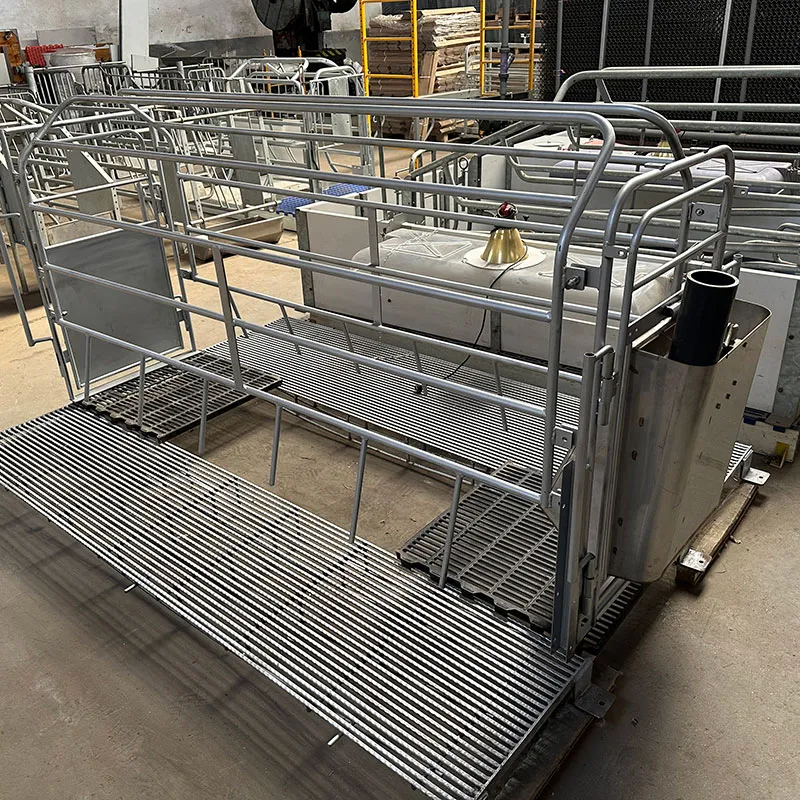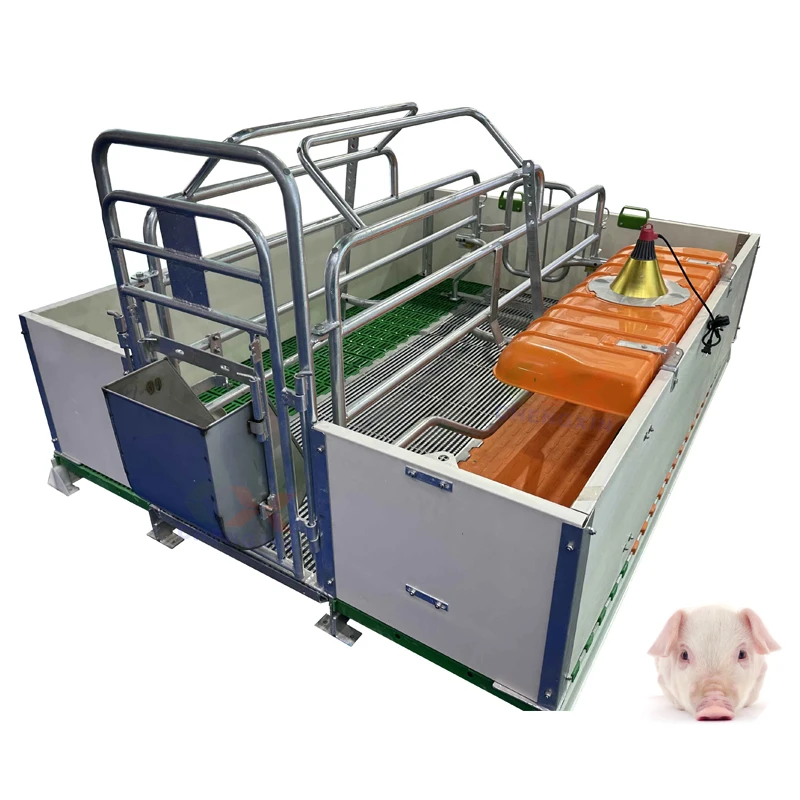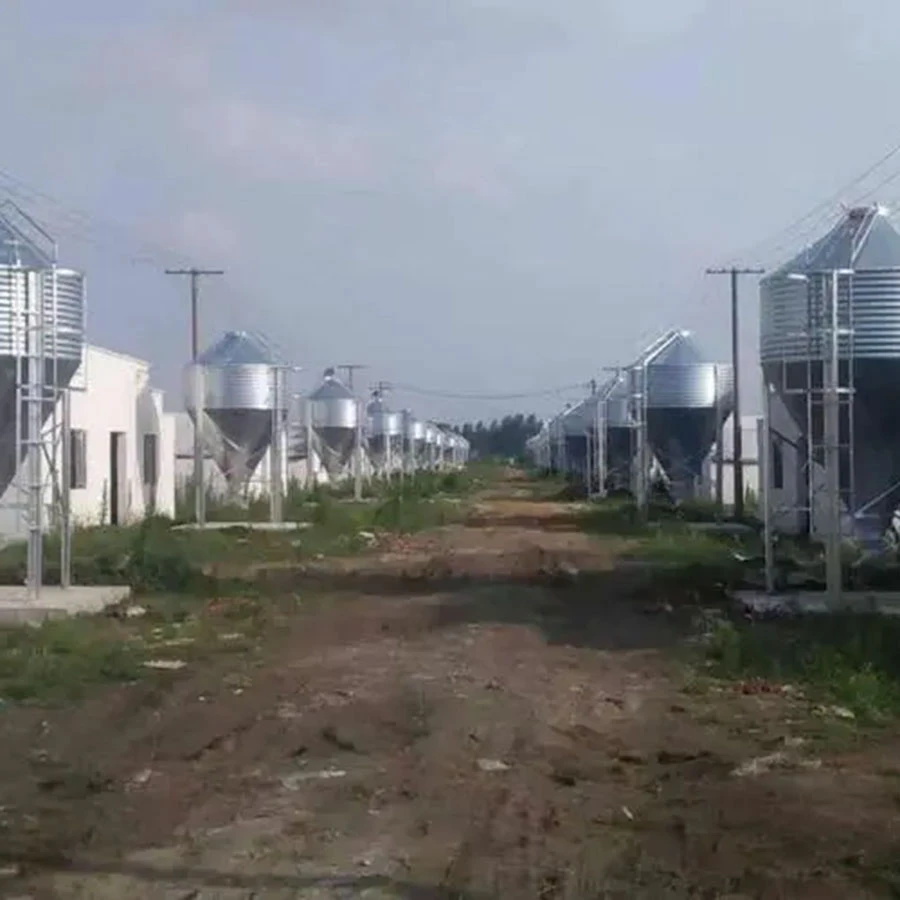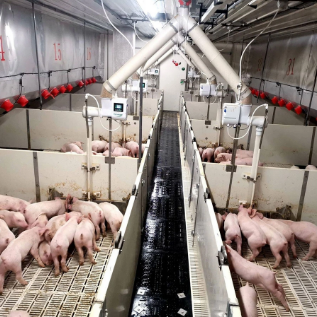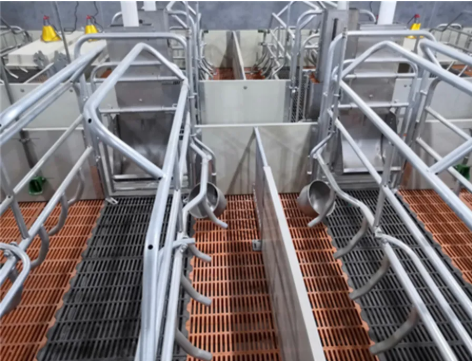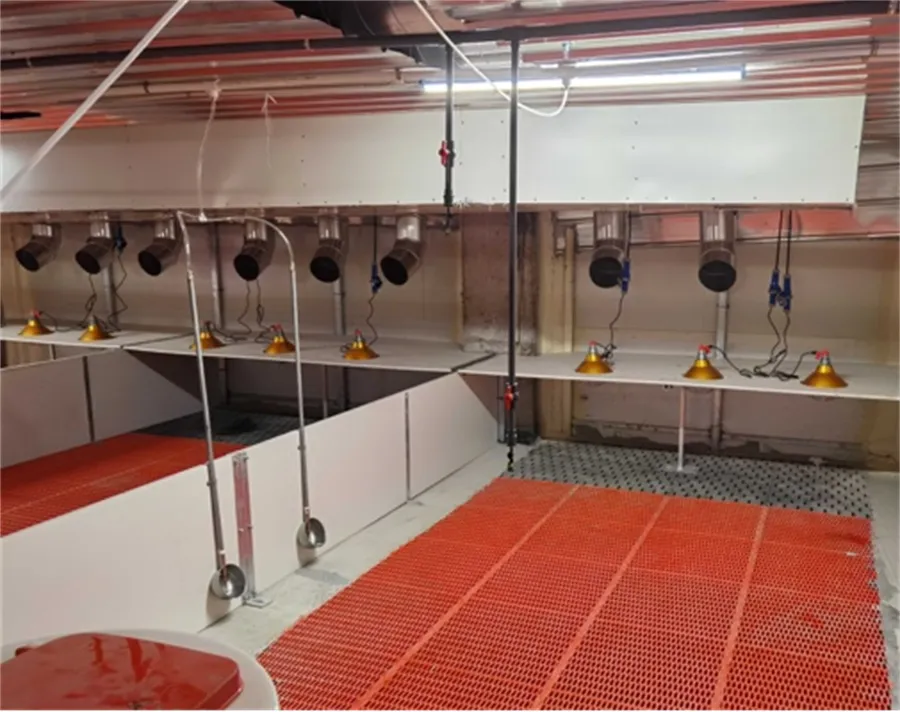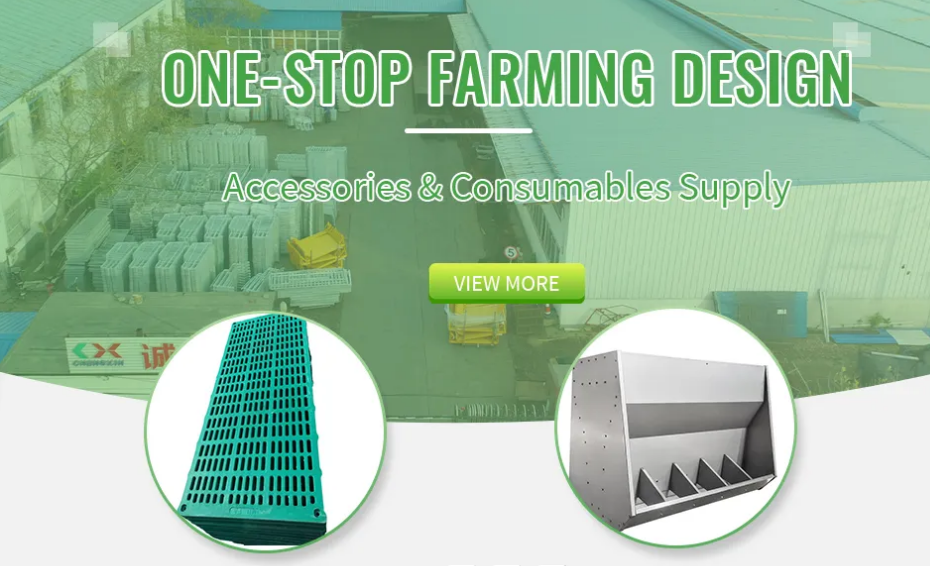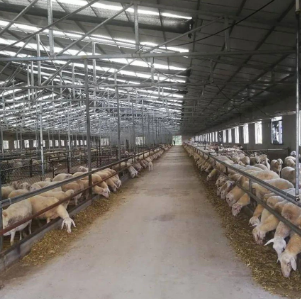The Evolution of Pig Farming: Insights into Advanced Feeding Systems and Industry Trends
The global livestock industry is undergoing a significant transformation, driven by demands for increased efficiency, sustainability, and animal welfare. Within this landscape, modern pig farming has evolved from rudimentary practices to highly sophisticated, technology-driven operations. Central to this evolution is the role of advanced feeding systems, particularly the hog feeder, which stands as a cornerstone of productivity and profitability for commercial swine producers. Historically, pig feeding involved manual distribution, leading to considerable feed waste, inconsistent nutrient intake, and higher labor costs. Today, automated and semi-automated hog feeders are designed to deliver precise feed amounts, optimize nutritional programs, and minimize environmental impact. Industry trends indicate a strong shift towards intelligent feeding solutions that integrate data analytics, remote monitoring, and environmental control capabilities. This includes features that account for the specific dietary needs of different growth stages, from farrowing sows to finishing pigs, thereby maximizing feed conversion ratio (FCR) and reducing the time to market. The emphasis on biosecurity, disease prevention, and ensuring consistent growth rates across the herd further underscores the necessity of robust and hygienic feeding equipment. Producers are increasingly investing in sophisticated hog raising equipment that not only automates feeding but also contributes to overall farm management efficiency, reflecting a broader movement towards 'smart farming' technologies. This paradigm shift is critical for farms aiming to meet the escalating global protein demand while adhering to stringent operational standards and environmental regulations.
The drive for economic viability, coupled with growing public awareness regarding animal welfare, compels farms to adopt solutions that improve both animal living conditions and operational throughput. Modern hog feeder systems provide consistent access to feed, reducing competition among animals, which can lead to stress and aggression. For smaller operations, the demand for efficient small hog feeders is also rising, enabling precise nutrient delivery even in more confined or specialized settings. These systems are pivotal in achieving optimal growth rates and reducing the incidence of digestive issues, which can arise from irregular feeding schedules. Furthermore, the integration of sensors and data collection mechanisms within contemporary feeding systems allows farmers to monitor feed intake patterns, identify anomalies early, and make data-driven decisions regarding animal health and nutritional adjustments. This proactive approach significantly minimizes veterinary costs and potential production losses. The market is also witnessing an increased demand for feeders made from durable, corrosion-resistant materials, reflecting the industry’s need for longevity and minimal maintenance in harsh farm environments. This comprehensive approach to feeding, extending beyond mere delivery to encompass holistic animal management, is a testament to the industry's commitment to excellence and sustainability.
Precision Engineering: The Manufacturing Process of Advanced Hog Feeders
The manufacturing of high-performance hog feeder systems is a meticulous process, integrating advanced engineering and stringent quality control to ensure durability, hygiene, and optimal functionality. It begins with the selection of premium materials, primarily food-grade stainless steel (e.g., SUS304 or SUS316 for enhanced corrosion resistance) and high-density, UV-stabilized engineered plastics. These materials are chosen for their non-reactive properties, ease of cleaning, and resistance to the corrosive effects of feed and farm environments. The manufacturing journey typically commences with precise CAD-CAM design and modeling, allowing for iterative improvements and custom configurations. Raw material sheets and pellets then undergo various transformation processes. For stainless steel components, this includes precision laser cutting or plasma cutting for intricate shapes, followed by automated bending and forming using CNC press brakes to achieve the required structural integrity and dimensions. Welding, often TIG or MIG, is meticulously performed to create seamless, robust joints that prevent feed accumulation and facilitate cleaning, adhering to strict penetration and finish standards to avoid bacterial harborage. Plastic components are produced via high-pressure injection molding or rotational molding, ensuring uniform wall thickness and structural strength.
Post-forming, components undergo rigorous surface treatments; stainless steel parts might be passivated to enhance corrosion resistance, while some metallic parts might receive durable powder coatings for additional protection and aesthetic appeal. Assembly is conducted in controlled environments, with automated systems ensuring accuracy for complex parts like feeding mechanisms and augers. Throughout the entire process, multiple layers of quality inspection are implemented. This includes dimensional checks with precision instruments, material composition verification, weld integrity tests, and functional testing of moving parts. Compliance with international standards such as ISO 9001 for quality management systems is paramount, ensuring that every hog feeder meets a predefined benchmark for reliability and performance. Additionally, adherence to specific agricultural equipment safety standards ensures operational safety within the farm environment. The typical operational lifespan of a well-maintained advanced hog feeder can exceed 15-20 years, a testament to the robust manufacturing processes. These feeders are designed for continuous use in commercial pig farming operations, breeding facilities, and agricultural research centers, where their energy-efficient designs and corrosion-resistant construction significantly reduce long-term operational costs and maintenance requirements. The emphasis on hygienic design directly contributes to better biosecurity protocols, preventing the spread of pathogens through contaminated feed or equipment surfaces.
Key Technical Parameters and Comparative Analysis of Hog Feeders
Selecting the appropriate hog feeder requires a deep understanding of key technical parameters that directly impact efficiency, animal performance, and operational costs. These parameters encompass feeder capacity, material composition, feeding mechanism, level of automation, and overall dimensions. Feeder capacity, typically measured in kilograms or bushels, must align with herd size and growth stage, ensuring sufficient feed availability without spoilage. For instance, a grow-finish feeder for 50 pigs might have a capacity ranging from 150 kg to 300 kg, depending on refill frequency and desired ad-libitum access. Material composition is crucial for longevity and hygiene; stainless steel offers superior corrosion resistance and durability, ideal for wet-dry feeders, while reinforced plastics are lighter, cost-effective, and also easy to clean, often seen in nursery or small hog feeders. The feeding mechanism is central to feed delivery precision: ad-libitum feeders allow pigs continuous access, promoting faster growth, whereas restricted feeding systems dispense fixed amounts at programmed intervals, useful for breeding sows or specific dietary regimens. Wet-dry feeders combine feed with water at the trough, enhancing palatability and reducing water waste.
Automation levels vary significantly, from basic mechanical dispensers to fully integrated systems with sensors, software control, and remote monitoring capabilities. High-automation feeders minimize labor, improve consistency, and provide valuable data on feed intake and growth patterns, essential for optimizing Feed Conversion Ratio (FCR). Dimensions must fit the pen size and animal age, ensuring comfortable access for pigs without creating congestion or waste. Below is a comparative table illustrating typical specifications across different types of hog feeder systems, highlighting their suitability for various farm needs. This data-driven approach allows for informed decision-making, ensuring that the selected equipment aligns perfectly with farm objectives for productivity and animal welfare. The subtle nuances in design, such as trough depth, feed flow adjustability, and overall structural robustness, play a critical role in minimizing feed waste, reducing feed contamination, and ultimately improving the overall health and productivity of the swine herd. Evaluating these specifications against specific farm conditions, including climate, housing type, and labor availability, is paramount for a successful investment.
| Feature | Nursery Feeder (Small) | Grow-Finish Feeder (Standard) | Farrowing/Gestation Feeder (Specialized) |
|---|---|---|---|
| Capacity (kg) | 10 - 50 kg | 150 - 500 kg | 20 - 40 kg (per sow) |
| Recommended Pig Weight | 5 - 25 kg | 25 - 120 kg | Sows (Gestation/Lactation) |
| Typical Material | High-density Plastic, SUS304 | SUS304, Galvanized Steel | SUS304, Cast Iron (Trough) |
| Feeding Mechanism | Ad-libitum, Adjustable Flow | Ad-libitum (Dry/Wet-Dry) | Precision Drop, Automated Dispenser |
| Automation Level | Manual refill, gravity flow | Semi-automated to Fully automated | High (Electronic Sow Feeding) |
| Key Advantage | Reduces waste, easy cleaning | Optimizes FCR, reduces labor | Individualized nutrition, stress reduction |
Application Scenarios and Operational Advantages in Modern Pig Production
The strategic deployment of advanced hog feeder systems across various stages of pig production is paramount to maximizing operational efficiency and animal welfare. In farrowing units, precision feeders ensure that lactating sows receive adequate nutrition to support milk production and quick recovery, simultaneously providing creep feed for piglets to encourage early solid feed intake. This dual functionality is critical for minimizing piglet mortality and optimizing weaning weights. In nursery phases, robust small hog feeders are designed to accommodate the rapid growth of weaned pigs, providing consistent access to specialized starter diets that promote digestive health and seamless transition. For the grow-finish stages, high-capacity, automated hog feeder systems are deployed to support continuous ad-libitum feeding, which is crucial for achieving target market weights efficiently. These feeders often integrate wet-dry feeding mechanisms, which have been shown to improve feed intake, enhance palatability, and reduce water consumption, contributing to better feed conversion ratios (FCRs). This integrated approach helps in minimizing feed wastage, a major cost factor in pig production, by preventing spillage and ensuring that feed remains fresh and uncontaminated.
Beyond direct feed delivery, the advantages extend to significant labor savings, as manual feeding is largely eliminated, freeing up farm personnel for other critical tasks like animal health monitoring and facility maintenance. Enhanced animal health and welfare are direct benefits, as consistent nutrient availability reduces competition, stress, and associated health issues. The precise delivery of feed, often customized for specific genetic lines or health statuses, supports robust immune systems and reduces the reliance on antibiotics. Furthermore, sophisticated hog raising equipment like the "Cooler And Heater In Pig Farming Equipment" complements these feeding systems by maintaining optimal environmental conditions, which directly impacts feed intake and growth rates. Studies show that pigs in thermally comfortable environments consume feed more efficiently and exhibit better growth performance. This integrated environmental control with precise feeding contributes to a significant reduction in overall production costs and an improvement in meat quality. The durable construction of these feeders, often using stainless steel, also contributes to superior biosecurity by being easy to clean and sanitize, thereby minimizing the risk of disease transmission within the herd.
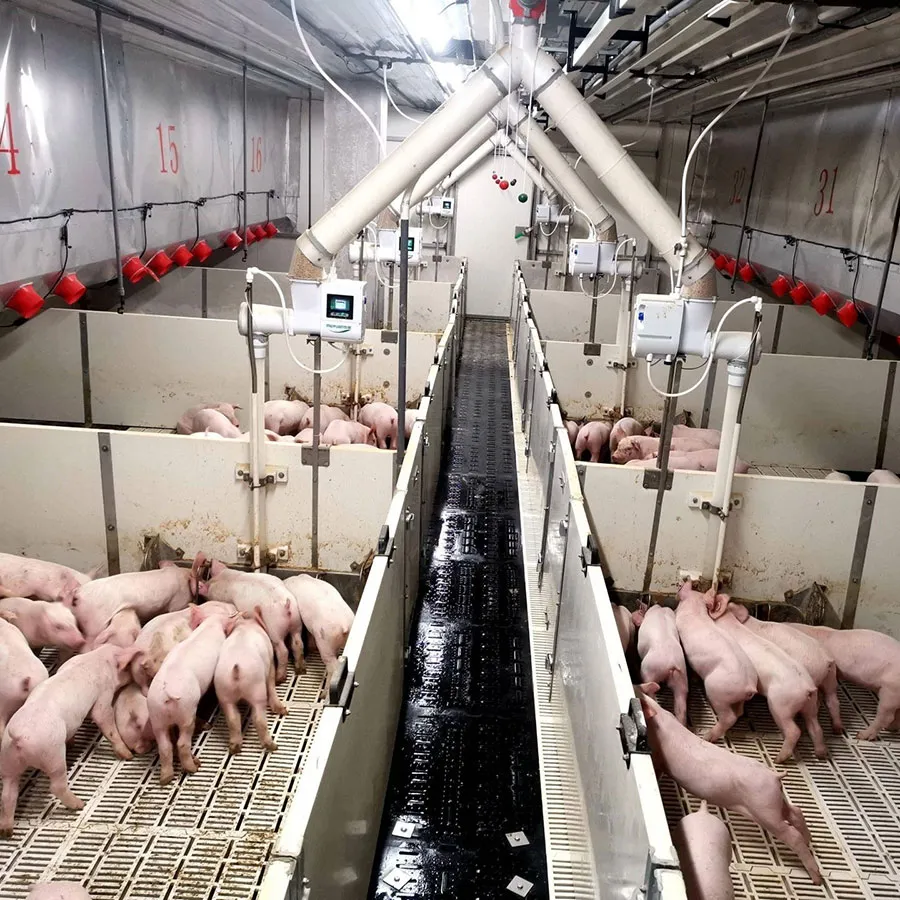
Image: Advanced temperature control equipment complementing an efficient hog feeder system in a modern pig farm.
Customization and Real-World Application Case Studies
Recognizing the diverse operational scales and specific requirements of modern pig farms, leading manufacturers of hog feeder systems offer extensive customization options. This bespoke approach ensures that whether it's a large-scale commercial operation or a specialized breeding facility, the feeding solution is precisely tailored to maximize performance and integration with existing infrastructure. Customization can involve capacity adjustments, selection of specific materials (e.g., highly abrasive-resistant alloys for high-roughage diets), integration with existing feed delivery lines, and development of specialized trough designs for various pig age groups or housing systems. For instance, a producer focusing on rapid finishing might require high-flow, ad-libitum wet-dry feeders, while a breeding farm would prioritize precise, individual sow feeders for optimal reproduction management. This flexibility allows farms to optimize their investment, ensuring that every component of their hog raising equipment contributes effectively to their unique production goals. Manufacturers also provide expertise in farm layout design, ensuring efficient feed flow from storage silos to the final feeder units, minimizing bottlenecks and maximizing accessibility for pigs.
Case Study 1: Large-Scale Commercial Pig Farm Optimization
A large commercial pig farm in Iowa, facing challenges with high feed waste and inconsistent growth rates across its 10,000-head finishing operation, implemented a new integrated system featuring automated stainless steel hog feeder units. These feeders, equipped with load cells and cloud-based monitoring software, allowed for real-time tracking of feed consumption per pen. Within six months of deployment, the farm reported a verifiable 8% reduction in feed wastage, equating to an estimated annual saving of $150,000 on feed costs alone. The consistent feed delivery also led to a 5% improvement in average daily gain (ADG) and a 3% decrease in Feed Conversion Ratio (FCR), demonstrating the direct financial benefits of precision feeding. The farm manager praised the system's robustness and the manufacturer's responsive technical support, noting, "The investment paid for itself much faster than anticipated due to the tangible improvements in efficiency and animal performance." This project exemplified how advanced hog feeder technology transforms operational efficiency.
Case Study 2: Breeding Facility Enhancing Sow Welfare and Productivity
A specialized breeding facility in North Carolina sought to improve the health and productivity of its 1,500 sows during gestation and lactation. They adopted customized individual electronic sow feeders (ESF) that allowed for precise, individualized feed delivery based on each sow's parity, body condition, and stage of gestation. This system, complementing their Cooler And Heater In Pig Farming Equipment for environmental control, significantly reduced feed competition among sows, leading to a noticeable reduction in stress-related behaviors. Post-implementation data showed a 7% increase in farrowing rates and a 0.5 more weaned piglet per sow per year, directly attributable to optimized nutrition and reduced stress. The facility's veterinarian commented, "The ability to customize feed curves for each sow, combined with the excellent environmental control, has revolutionized our breeding program. Our sows are healthier, more productive, and the improved animal welfare is evident." These real-world outcomes underscore the transformative impact of meticulously designed and implemented hog feeder solutions.
Quality Assurance, Certifications, and Customer Trust
For B2B decision-makers, trust in equipment suppliers is built on a foundation of proven quality assurance, robust certifications, and transparent customer support. Manufacturers of high-quality hog feeder systems adhere to rigorous quality control protocols throughout every stage of design, production, and assembly. This commitment starts with sourcing only certified raw materials that meet strict industry standards for durability, non-toxicity, and resistance to corrosion, ensuring that the finished product can withstand the demanding conditions of intensive pig farming. Each component undergoes meticulous inspection, from the precise dimensions of cut metal sheets to the integrity of welds and the functional performance of mechanical parts. Final assembly includes comprehensive testing of the entire feeding system, simulating operational conditions to verify reliability and feed delivery accuracy. Compliance with internationally recognized quality management systems, such as ISO 9001:2015, is a testament to a manufacturer's dedication to consistent product quality and continuous improvement. This certification assures clients that every hog feeder is produced under a systematically managed framework designed to meet and exceed customer expectations and regulatory requirements.
Beyond manufacturing quality, a strong emphasis is placed on post-purchase support and long-term client relationships. Reputable suppliers typically offer comprehensive warranty periods for their hog raising equipment, demonstrating confidence in their product's longevity and performance. Standard warranties often cover manufacturing defects for 1-5 years, providing peace of mind for significant investments. Delivery cycles are streamlined and transparent, with clear communication regarding lead times, shipping logistics, and installation support, ensuring timely project completion and minimal disruption to farm operations. Technical support teams composed of experienced engineers and livestock specialists are readily available to assist with installation queries, operational troubleshooting, and maintenance guidance, ensuring optimal performance throughout the lifespan of the equipment. Furthermore, customer support extends to providing access to spare parts, upgrade options, and periodic maintenance services. This holistic approach to client service builds enduring trust, proving that the commitment extends far beyond the initial sale.
Frequently Asked Questions (FAQ)
-
Q: What is the average lifespan of a modern hog feeder?
A: With proper maintenance and given the use of high-quality materials like SUS304 stainless steel and durable plastics, advanced hog feeder systems are designed for an operational lifespan of 15-20 years or more. This longevity significantly contributes to a lower total cost of ownership over time.
-
Q: How do these feeders contribute to biosecurity on the farm?
A: Modern hog feeders are designed with smooth, non-porous surfaces and minimal crevices, making them easy to clean and sanitize effectively. This design minimizes the accumulation of feed residue and prevents the harborage of bacteria and pathogens, thereby significantly reducing the risk of disease transmission within the herd and enhancing overall biosecurity protocols.
-
Q: Can your feeding systems be integrated with existing farm management software?
A: Yes, many advanced hog feeder solutions feature open architecture or API capabilities, allowing seamless integration with leading farm management software platforms. This enables centralized data collection, real-time performance monitoring, and comprehensive analytical reporting for optimized decision-making across the entire operation.
Concluding Remarks and Future Outlook
The journey of modern pig farming is inextricably linked with the continuous evolution of hog raising equipment, particularly advanced feeding systems. The sophisticated hog feeder of today is far more than a simple dispenser; it is a critical component of a comprehensive farm management strategy, offering unparalleled precision, efficiency, and a tangible contribution to animal welfare. By integrating robust construction with intelligent automation, these feeders significantly reduce operational costs through minimized feed waste, optimized feed conversion ratios, and substantial labor savings. They also play a vital role in enhancing herd health by ensuring consistent, hygienic, and precisely formulated nutrition, which directly translates to improved growth rates and reduced disease incidence. For B2B decision-makers in the swine industry, investing in high-quality, technologically advanced feeding solutions is no longer an option but a strategic imperative to remain competitive and sustainable in a global market that increasingly demands efficiency, traceability, and ethical production practices.
The future of pig farming will undoubtedly see further integration of artificial intelligence, machine learning, and advanced sensor technologies into feeding systems. This will lead to even more granular data analysis, predictive analytics for feed consumption, and highly individualized animal management, moving towards a truly 'precision livestock farming' model. Such innovations promise to unlock new levels of productivity, sustainability, and animal well-being. Partnering with a manufacturer that prioritizes research and development, adheres to stringent quality standards, and offers comprehensive support will be key to navigating these advancements. The commitment to delivering cutting-edge solutions, from the fundamental mechanics of a hog feeder to integrated environmental controls like the "Cooler And Heater In Pig Farming Equipment," ensures that pig producers are equipped with the tools necessary to meet the challenges and opportunities of tomorrow's agricultural landscape.
References
- Journal of Animal Science. (2023). Advancements in Automated Feeding Systems for Swine Production.
- Agricultural Engineering Research. (2022). Impact of Environmental Control on Feed Conversion Efficiency in Commercial Pig Farms.
- Swine Health Management Journal. (2021). Biosecurity Benefits of Hygienic Feeding Equipment in Intensive Pig Production.
- Livestock Production Science. (2024). Economic Analysis of Precision Feeding Technologies in Pig Farming Operations.
- Applied Engineering in Agriculture. (2023). Material Selection and Durability Testing for Livestock Feeding Equipment.
Post time: 8月 . 18, 2025
